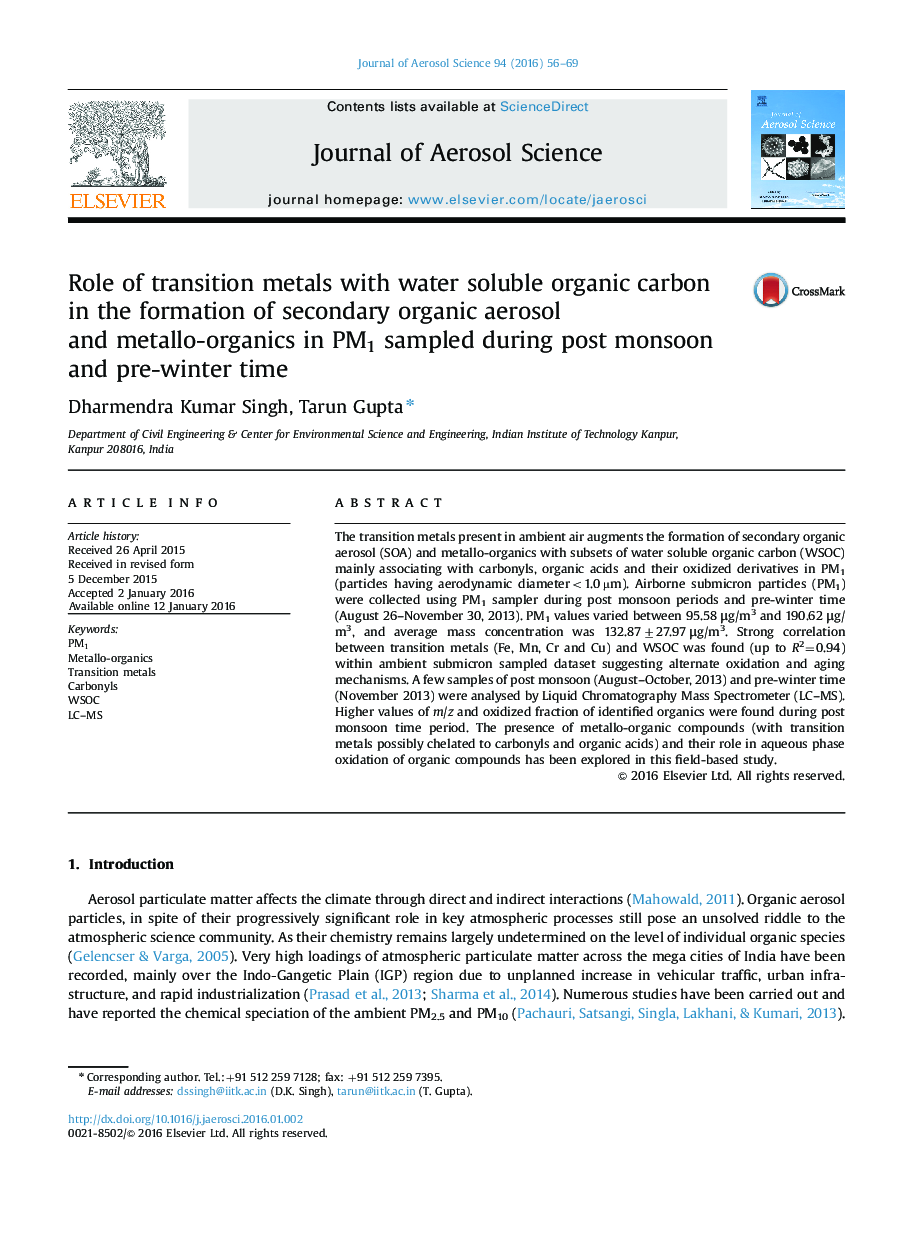| Article ID | Journal | Published Year | Pages | File Type |
|---|---|---|---|---|
| 4452216 | Journal of Aerosol Science | 2016 | 14 Pages |
•Strong correlation between transition metals and WSOC.•Aqueous phase oxidation and production of SOA.•Fe and Cu as major transition (Fenton) metals.•Role of metallo-organics in WSOC oxidation.
The transition metals present in ambient air augments the formation of secondary organic aerosol (SOA) and metallo-organics with subsets of water soluble organic carbon (WSOC) mainly associating with carbonyls, organic acids and their oxidized derivatives in PM1 (particles having aerodynamic diameter<1.0 µm). Airborne submicron particles (PM1) were collected using PM1 sampler during post monsoon periods and pre-winter time (August 26–November 30, 2013). PM1 values varied between 95.58 μg/m3 and 190.62 μg/m3, and average mass concentration was 132.87±27.97 μg/m3. Strong correlation between transition metals (Fe, Mn, Cr and Cu) and WSOC was found (up to R2=0.94) within ambient submicron sampled dataset suggesting alternate oxidation and aging mechanisms. A few samples of post monsoon (August–October, 2013) and pre-winter time (November 2013) were analysed by Liquid Chromatography Mass Spectrometer (LC–MS). Higher values of m/z and oxidized fraction of identified organics were found during post monsoon time period. The presence of metallo-organic compounds (with transition metals possibly chelated to carbonyls and organic acids) and their role in aqueous phase oxidation of organic compounds has been explored in this field-based study.
Graphical abstractFigure optionsDownload full-size imageDownload high-quality image (153 K)Download as PowerPoint slide
